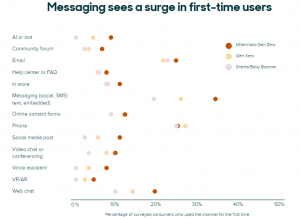
The notion that opposites attract may be true in your personal relationships; being with someone who isn’t like you can provide a sense of balance and novelty. When it comes to coworkers, however, it’s often a different story. You didn’t choose them, but you need to get along with them.
“You don’t necessarily understand where they’re coming from because they’re opposite, or at least very different,” says Kelly McDonald, author of How to Work With and Lead People Not Like You. “You may not get their perspective because that’s not how your mind thinks or the way that you operate.”
Some of the common personalities that would be considered opposites include: risk-takers versus those who are risk averse, decisive people versus ponderers, introverts and extroverts, analytical thinkers and creative thinkers, and confrontational and nonconfrontational people.
“In all of these cases, I think the challenge at work is about keeping the business moving forward,” says McDonald. “Anytime the conversation shuts down, it’s not good for business. We’ve got to be able to talk about things, even the things that we don’t know how to talk about.”
Find the Connection
The first step for working with someone who is not like you is to find the common ground. “We might have to look for it and dig a little bit, but it’s always there,” says McDonald, adding that good topics to connect on can be families, hobbies, movies, pets, and sports. “Anything we can do that starts a safe conversation that is a positive connecting point is good.”
McDonald recalls a previous employer who called his team into a conference room for a quick standing meeting. He told the group, “We’ve all been working together, but some of us don’t know each other very well. I want everyone in the room to share something that others are not likely to know about you.”
“It was really fun because people were saying the most random things,” says McDonald. “One said, ‘I know how to do a proper British curtsy.’ Another person said, ‘I was raised on a ranch in Wyoming.’ These things aren’t likely to come up at work. Finding common ground, or a topic to talk about, creates a bridge between you and someone else.”
Stop Saying “Let’s Agree to Disagree”
Different perspectives, approaches, and viewpoints can often lead to friction at work. Not everyone will see things the same way you do, and it can create tension if someone tries to win an argument or persuade others to share their point of view. Often the compromise is to say, “Let’s agree to disagree,” but this is a mistake, says McDonald.
“Those words are polite, and they should work—but they don’t. It comes across as dismissive,” she says. “It’s almost a snobby tone in your voice that is saying, ‘Obviously, you can’t see that I’m right.’ And with that, the conversation is over.”
Instead, McDonald recommends saying, “I see it differently.” “Those four words can turn a debate into a discussion,” she says. “I’m going to bet my house that you’re going to come back with something like, ‘Tell me how you see it,’ and then we’re having a conversation. It still might not be smooth sailing, but as long as we’re continuing a conversation, we can try to understand another’s perspective, even if it’s very different from ours.”
Don’t Think of Coworkers as Family
Some companies like to create a culture in which their team is like a family. That’s a mistake because it can make employees feel bad for not liking a coworker. Liking and disliking are emotions, and emotion can be left out of work, says McDonald.
“Culture is more about the shared mission, the shared goals, the shared vision, and the values,” she says. “You don’t have to like someone to be able to work effectively with them. It’s possible to be part of a high-performing team and not necessarily like each other. Sports teams and military troops do this all the time. When they get out there, they have a job to do, and they do it.”
Realizing that it’s okay to not like someone frees you up to focus on the job at hand. “Of course, you must be respectful and professional at all times,” says McDonald. “Set the emotion aside and say, ‘What are we doing here? We’re working on this. That’s what I’m going to focus on.’”
Give Each Other Grace
Many of us are afraid of saying the wrong thing, and it’s not uncommon to do. McDonald says when people say the wrong thing, it’s often not out of maliciousness, spite, or meanness. It’s usually due to ignorance.
“We need to acknowledge that as people navigate conversations at work, sometimes people are going to say the wrong thing,” she says. “You can tell when malice is intended and when it’s not.”
Instead of taking things personally or going on the attack, McDonald recommends correcting the person and moving on. “It’s not sweeping it under the rug,” she says. “It’s addressing it, but not in a tear-your-head-off way. We have enough tear-your-head-off anger in the world.”
In the moment, McDonald recommends giving the person a little bit of grace, correcting them, and letting them know that what they said was not okay.
“Focus on the outcome and the goals of what the team is trying to do,” she says. “When a conversation schisms off in a different direction that’s not productive, bring it back. Everything we’re trying to do is about refocusing. Things can get heated quickly, and that’s not good for anybody’s career, or for the business.”
Fast Company , Read Full Story
(30)








